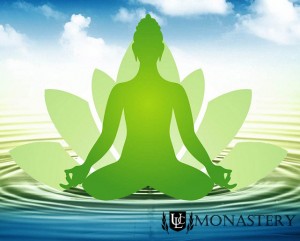
December is a month of holidays. Christmas, Chanukah, Ramadan and Kwanzaa all populate the month of December. However, another holiday that few understand also calls December home, the celebration of Rohatsu. This is the Buddhist celebration of the day the Buddha received Nirvana. As an interfaith minister in the Universal Life Church, the focus on meditation during Rohatsu carries a strong message of looking inward into one’s self. For an individual who wishes to be ordained through the Universal Life Church, meditation can be a successful way to improve one’s self, even for non-Buddhists.
Literally meaning “eighth day of the twelfth month” in Japanese, Rohatsu is celebrated on the eighth of December and has been since Japan adopted the European-style calendar in the nineteenth century. According to tradition, after fasting for 49 days, Siddhartha Gautama “awakened” and became aware of the four noble truths, the eightfold path, the five precepts and karma. After achieving the five revelations, they came together and revealed to him the of Nirvana, or ultimate enlightenment. At the point that Gautama obtained enlightenment, he ceased to be his former self and became the enlightened one, the Buddha.
In Japan, Rohatsu is the celebration of the moment the Buddha obtained Nirvana. In the seven days leading up to Rohatsu Zen Buddhist monks maintain a constant state of meditation, stopping only to eat and sleep and only speaking when necessary. The meditations increase in length until the night before Rohatsu, when the monks stay in a meditative state until the beginning of Rohatsu at midnight. The monks focus on the same five principles that allowed Gautama to reach Nirvana and become the Buddha. These five points of Buddhism are meant to help the individual improve themselves on the path to true enlightenment.
In Buddhist households across the world, each family member spends the day meditating on how they can improve themselves, to live neither in excess nor in extreme asceticism and to follow the path of the Buddha. On Rohatsu, a Ficus tree is decorated with lights and brightly colored ornaments. A meal of rice and milk is served to signify the meal given to the Buddha as he meditated, ending the ascetic phase of his search for truth. Another tradition includes making cookies in the shape of the Bodhi Tree, the tree the Buddha was under when he reached Nirvana.
Even for non-Buddhists, the meaning of the holiday still holds a strong message of introspection and self-improvement. For those who wish to be ordained as an interfaith minister through the Universal Life Church, the message of Rohatsu, which focuses on reflecting about one’s own life and choices, is a strong message that holds benefits for those of any faith. Meditation is an idea that spans all beliefs and is a strong tool for self-improvement, for Buddhists and non-Buddhists alike.

